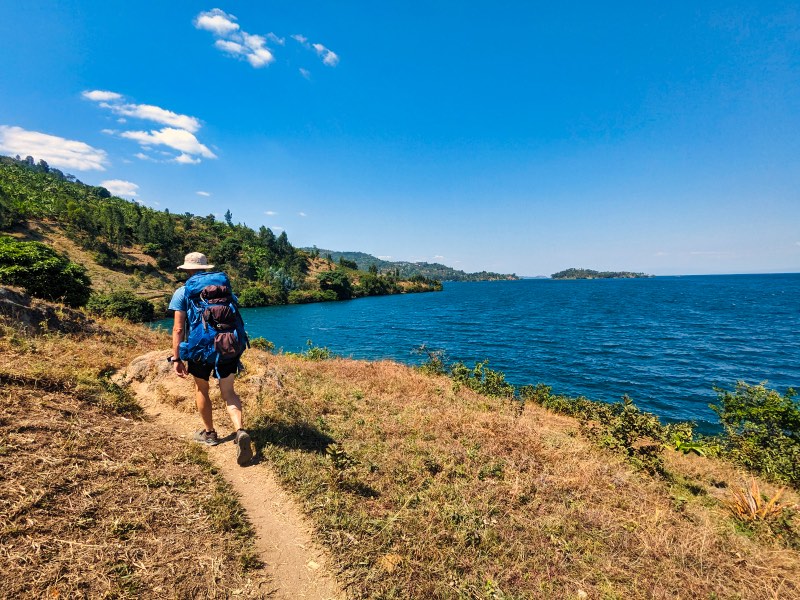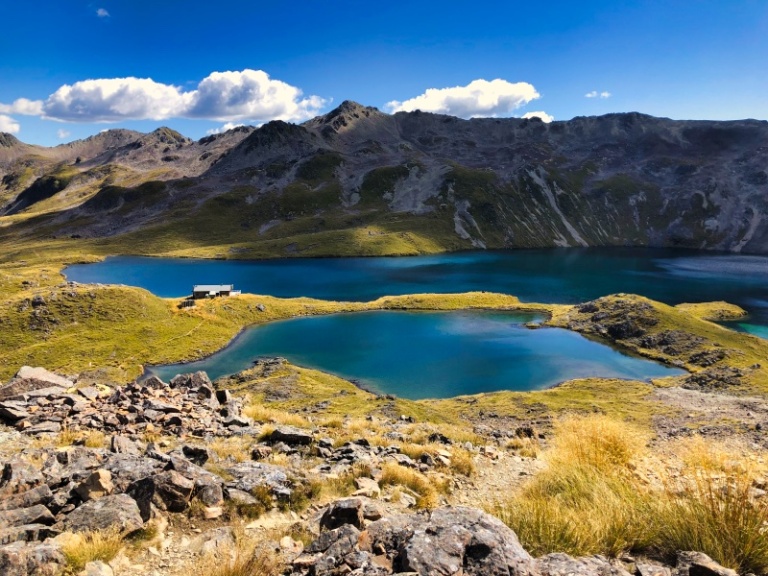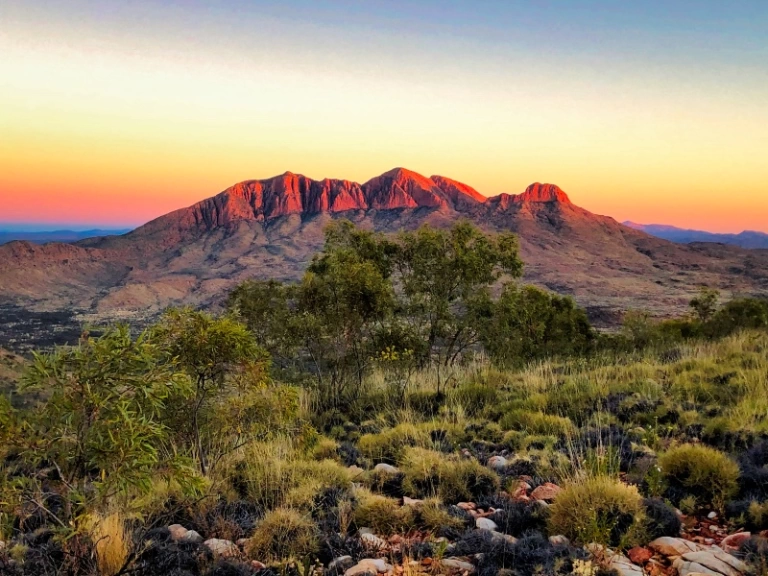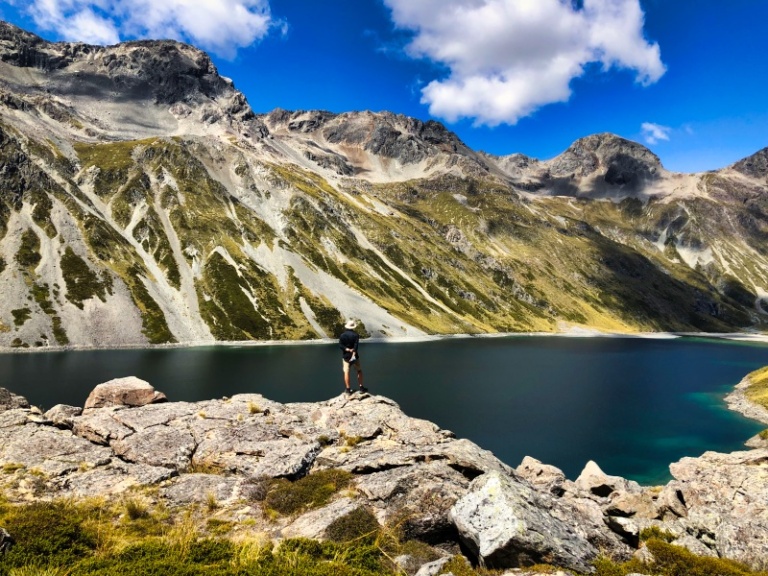The Essential Guide to Hiking the Congo Nile Trail
The Congo Nile Trail is a rare beast on the African continent: a hike you can do independently, that requires no permit and doesn’t need to be booked well in advance. But it’s not just accessibility that makes the Congo Nile Trail stand out – it’s also a fantastic walk, extremely scenic and a truly in-depth cultural experience.
Traversing small villages on the western edge of the country, hiking the Congo Nile Trail is a great way to experience rural Rwanda life. We can’t think of a more authentic or intimate travel experience. If you’re looking for an adventure, want to do some hiking in Rwanda and want to experience Rwanda and its rawest, the Congo Nile Trail is just for you!
Rwanda Travel Resources
- Getting there: search for flights to Rwanda
- Where to stay: find a guesthouse, hostel or hotel
- Guidebook: pick up a copy of Bradt’s Rwanda
- How to get around: rent a car or 4WD
- Travel insurance: get travel insurance for your trip
- Money: get a Wise travel card to save big time in Rwanda
- Gear: pick up a Steripen for clean water 24/7
Congo Nile Trail: Overview
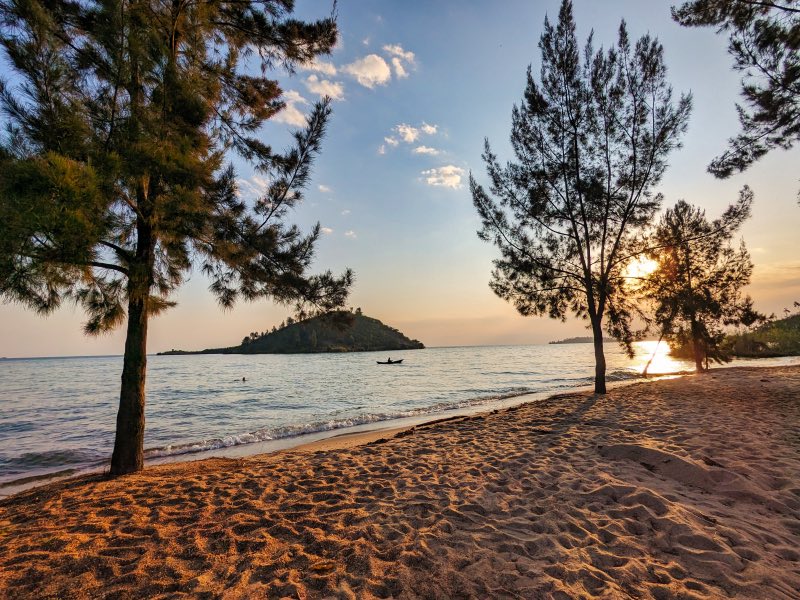
- Location: Lake Kivu, Western Rwanda
- Length: 227 km – split into sections
- Time: 4 – 10 days
- Season: Year-round
- Gateway City: Gisenye, Kibuye or Cyangugu
- Type: One-way
- Booking Required: No
- Sleeping: Guesthouses or camping
- Difficulty: Moderate
- What to expect: Lots of hills, swimming in Lake Kivu, a glimpse into rural Rwandan life and lots of attention from locals!
Congo Nile Trail Location
The Congo Nile Trail runs the length of Lake Kivu in western Rwanda. The trail begins near Gisenye (also known as Rubavu) and finishes in Cyangugu (also known as Kamembe). If you haven’t figured it out already, most cities in Rwanda have two names. Confusing, I know.
Read next: The Ultimate Guide to Hiking Fish River Canyon
Congo Nile Trail: The Hike
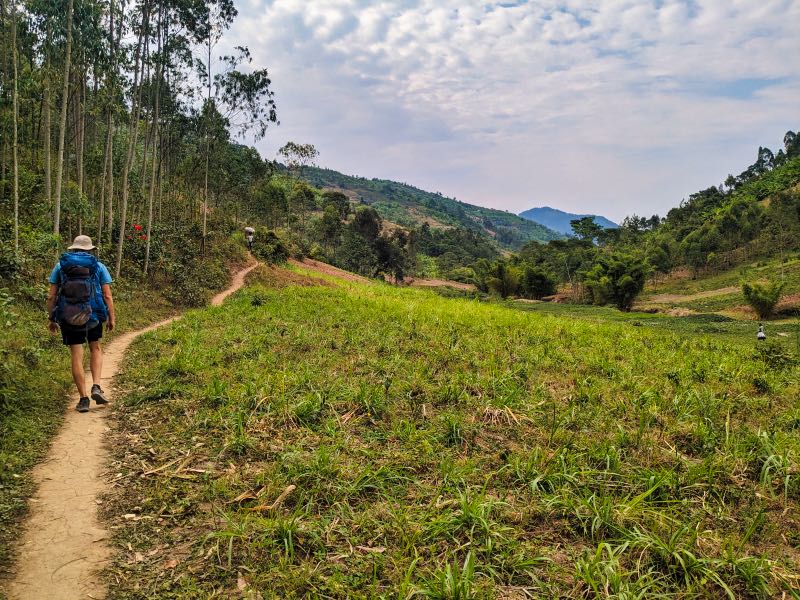
The Congo Nile Trail is a 227 km, 10-day trail in Western Rwanda. It can be hiked in either direction and is commonly done via sections. Of all the hiking options in Rwanda, it offers the most in terms of length, challenge and independent accessibility.
The Congo Nile Trail was originally developed back in 2009. After its inception, it received a lot of flack for the amount of road walking it required. Fortunately, the Rwanda Tourism Board seems to have listened to the copious negative feedback and the trail has been developed A LOT since then.
This means that there are now two Congo Nile Trails: the ‘main Congo Nile Trail’, which is mostly on roads and is best for biking or driving (although with some recent bridges being washed out, it’s impossible to drive) and the new ‘Congo Nile Hiking Trail’ which is solely for hiking.
The hiking trail is almost all single-track footpaths and is a very different trail from the main trail. The Congo Nile Hiking Trail is essentially an aggregation of various local footpaths that villagers use to walk between settlements.
On the Congo Nile Hiking Trail, you’ll be walking through villages, banana plantations, coffee farms and along the stunning Lake Kivu. Sometimes you’ll be on a dirt road, but mostly on narrow footpaths – and they can get very narrow!
Suffice it to say that the new Congo Nile Hiking Trail is a lot more exciting than the original trail.
For clarity, we’re just going to use the name ‘Congo Nile Trail’ in this post.
Want to hike a volcano in Rwanda? Check out Mount Bisoke (psst.. there are gorillas there!)
Community-Based Tourism
The Congo Nile Trail is an excellent example of community-based tourism in motion. All of the guesthouses and base camps are locally-run and most are social enterprises – meaning they put their profits back into the community in some way. Many of them fund schools or youth facilities.
By supporting these businesses while you’re hiking in Rwanda, you’re doing your part as a responsible traveller to ensure that the profits from tourism support the local communities who need them the most.
Loving hiking in Rwanda? Check out the Wolfberg Arch in South Africa
Congo Nile Trail: Sections
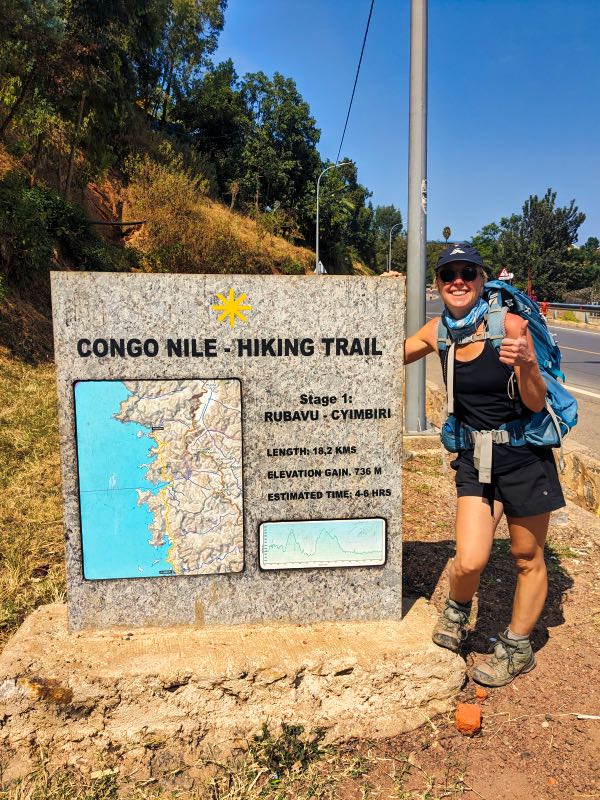
The Congo Nile Trail is split into two sections: the northern section, which runs from Gisenye to Kibuye, and the south section, from Kibuye to Cyangugu.
The majority of hikers tackle the trail via a section at a time, with the northern section being far more popular.
For many years, hikers avoided the southern section, as it was comprised solely of paved roads. However, this has changed dramatically with the development of new pathways.
We haven’t hiked the southern section of the Congo Nile Trail (yet), but it seems like a very exciting option for hiking in Rwanda. If any of you out there have, please give us some info in the comments below!
In our experience, although we love long-distance hiking, one section at a time was enough. Hiking the Congo Nile Trail can be a very intense experience (due to the lack of privacy) and there isn’t a ton of variation in the scenery. After completing the northern section, we were happy to finish up.
But, that being said, we loved the experience we are very excited to come back and do the southern section at some point to get more hiking in Rwanda in.
Read our hack on How to See Gorillas in Rwanda for $75
Best time to Hike the Congo Nile Trail
The best time to hike the Congo Nile Trail is during one of Rwanda’s dry seasons.
Yes, you heard that correctly: Rwanda has two dry seasons – a long dry season from June to mid-September and a short dry season in January and February. Although it should be noted that rain can occur at any time is not unknown in the short dry season.
During the dry seasons, you have the best chance of clear skies and a dry trail to walk on.
But this dry weather comes at a cost: it can get very hot and the sky can be hazy at this time, especially the later it is in the dry season. We hike the trail in August, the hottest month in Rwanda, and it was pretty brutal.
It is entirely possible to hike the Congo Nile Trail during one of Rwanda’s rainy seasons, you will just have to be prepared to deal with rain and mud! The trail will be extra slippery at this time, so be prepared with hiking poles and very good footwear. On the positive side, the skies should be crystal clear at this time.
If the hiking path becomes too muddy or slippery, there is always the option to hike along the ‘main’ trail used by cyclists.
How Difficult is Hiking the Congo Nile Trail?
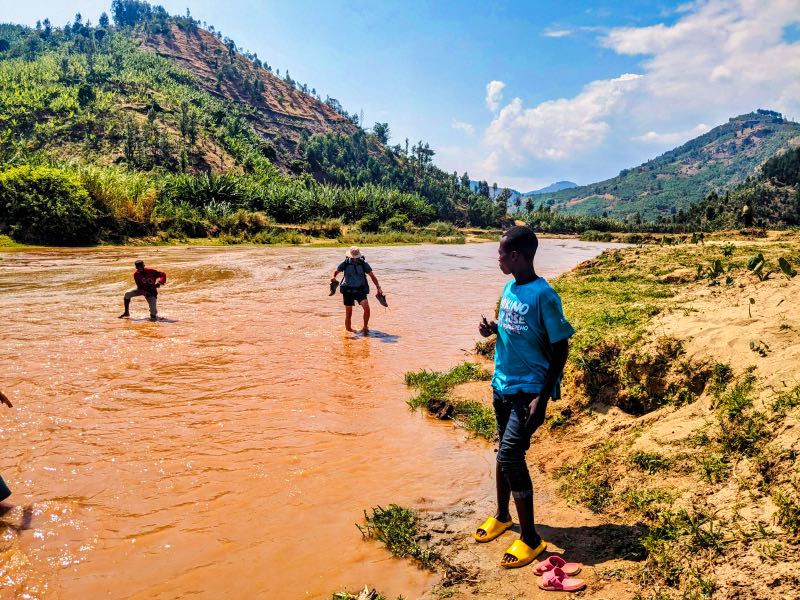
The Congo Nile Trail is moderately difficult. The main challenges in hiking the Congo Nile Trail are the steep hills, the heat and the attention from the locals.
Hills
Rwanda is a hilly country, so the Congo Nile Trail has a lot of steep hills, often on slippery slopes. When you are hiking in Rwanda, expect a workout!
Many of the descents are on very fine, loose dirt which can be quite slippery. The gradient can be very extreme, so you must be relatively fit.
Also, the trail is quite ad hoc, i.e., narrow footpaths on the side of a hill or a drainage path. This makes hiking more challenging.
Heat
Depending on the time of year, heat can be a big factor in hiking in Rwanda. When we hiked in August, the sun completely zapped our energy. Walking in the middle of the day was very difficult, as was going up the big hills (often without any shade).
Lack of Privacy
Another challenging factor about the Congo Nile Trail is the lack of privacy and attention you receive from locals. Rwanda is one of the most densely populated places on Earth and nowhere is this more apparent than along the Congo Nile Trail!
When hiking in Rwanda on the Congo Nile Trail, there are few opportunities for privacy and you will be (and feel) very conspicuous as you walk through the villages. Many, many people will want to engage with you throughout the day and sometimes it can be hard to have to energy to meet this level of engagement.
Due to the lack of seclusion, it is hard to find private spaces to pee en route or to sit down and have a snack or lunch. Often I would find a private spot, only to have a kid poke their head out at the last minute with a cheerful, ‘hello!’.
Read about the Rwenzori Mountains, the best hike in Africa
Do You Need a Guide on the Congo Nile Trail?
Absolutely not! This is one of the few hikes in Rwanda that you can do 100% independently. The trail is well signposted and there are ample digital maps online.
That said, some people prefer to hike with a guide and get a lot out of it. And as always, there are tours always heading out should that be your cup of tea. The choice is yours!
What to Expect on the Congo Nile Trail
Accommodation
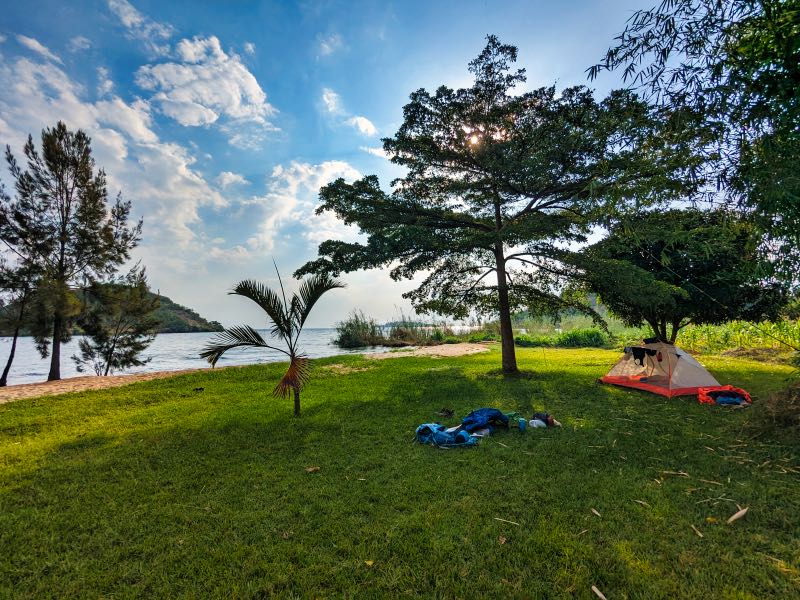
The beauty of the Congo Nile Trail is that you can hike it with or without a tent – the choice is completely yours!
There are designated guesthouses or base camps every night, each with the option to rent a room. At every guesthouse or base camp except for Musasa Homestay, there is also the option to pitch a tent, so campers are well accommodated for.
Food
One of the great features of the Congo Nile Trail is that you don’t have to carry much food! Every night on the trail has options to buy a delicious dinner and breakfast. Trust us, it’s not often you can hike all day and sit down to a delicious meal prepared for you!
You can purchase dinner and breakfast every day. For dinner, prices range from 5000 – 10000 RWF per person. For breakfast, expect 2500 – 5000 RWF per person.
We do recommend bringing your own lunches and snacks. In our experience, whilst you could buy rudimentary snacks and food on the trail (fried donuts, biscuits and bread), there aren’t many great options.
For lunches, peanut butter and jam sandwiches, hardboiled eggs and tuna are great options that can be easily found in Rwanda. We could keep our eggs in the fridge at each accommodation to prevent them from spoiling. For snacks, think dried fruit, nuts and biscuits.
Water
Water is available every day on the Congo Nile Trail, however, it is not always easy to find. For this reason, we recommend each person have a carrying capacity of 2L.
Bottled water isn’t cheap in Rwanda, so to minimise costs (and the impact on the environment), carrying a water purification method is a great idea. We used our Steripen and it worked a treat.
There is water available at every guesthouse/base camp, however, it needs to be treated. This is when your water purification device comes in handy!
You can also buy water at least once every day during the hike, but it can be challenging to find (especially when you really need it). We didn’t come across any running water or water sources that we could treat.
Our recommendation is to always fill up before you leave the base camp for the day. If you come across water in a village, it’s a good idea to drink or fill up as well. A 1.5L bottle should not cost more than 1000 RWF.
Weather
Whilst the weather in Rwanda is generally viewed as mild, it is still almost on the equator, which makes for hot hiking weather.
Expect hot days with little shade. Nights are pleasant and warm enough that you don’t need many layers, except for the nights spent at higher altitudes (i.e., at Bumba).
Navigation
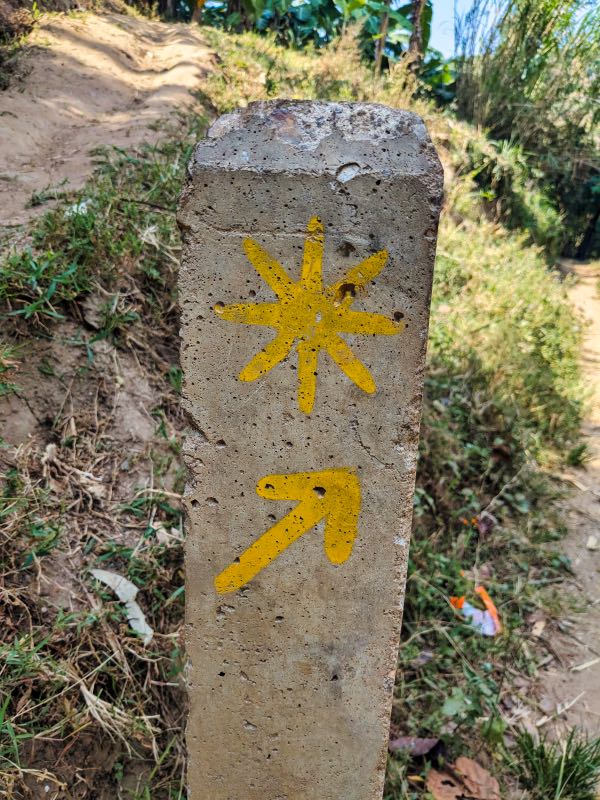
The Congo Nile Trail is now really well-marked. In fact, it’s one of the best-signposted trails we’ve come across in Africa. You do not need to carry a physical map.
But, that being said, there are still some ambiguous parts on the trail, so you absolutely need a digital map. It is well mapped on maps.me and we highly recommend downloading the Rwanda maps in advance. Do note that because of the two trails (see above), there are two trails on maps.me. The dotted one is the hiking trail, while the solid one is the main trail, used for biking.
There are also routes on Wikiloc, but as some of these follow the old trail, we recommend using these ones:
- Congo Nile Trail Hike Day 1
- Congo Nile Trail Hike Day 2
- Congo Nile Trail Hike Day 3
- Congo Nile Trail Hike Day 4
Rubbish
In theory, it’s possible to leave your rubbish behind at every base camp. But, considering that many of the villages don’t have great waste collection facilities, it’s a more responsible option to pack it out with you so it’s less likely to end up on the road or in the lake.
Safety
Overall, the Congo Nile Trail is a very safe hike. There are no dangerous animals to be aware of, nor is crime an issue.
The biggest safety issues would be the heat, sun exposure and dehydration. Be sure to cover up from the sun and stay as hydrated as possible.
The other risk is of course injury. Always pack a well-stocked first aid kit in case anything goes wrong.
As with all hikes, accidents do happen, so good travel insurance is essential. We use and recommend SafetyWing. Trust us, we’ve used a lot of travel insurance and they really are the best.
Mobile Reception and Electronics
Rwanda is a pretty well-connected nation, and there is pretty good MTN reception throughout the entire Congo Nile Trail.
We were also able to charge our devices at every guesthouse/base camp quite easily, so it wasn’t necessary to bring a power bank.
Interactions with Locals
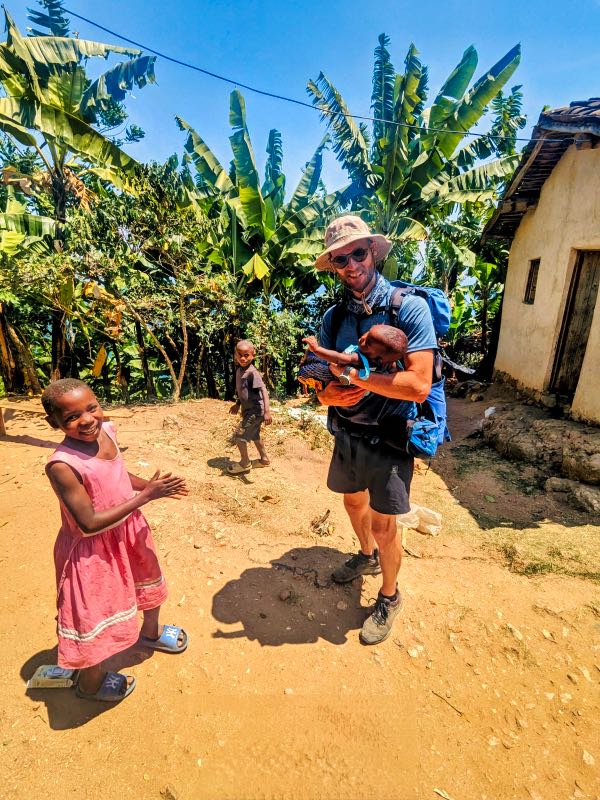
Essentially, as you hike the Congo Nile Trail, you walk through various rural villages. If you’re not used to Africa, walking through villages might seem weird at the start, but you quickly get used to it. As you’ll soon learn, it’s just a way of life for the locals.
Expect LOTS of interactions with locals. People will be very curious about you and you’ll attract a lot of attention. This will come in the form of ‘hello’ and ‘good morning ‘ (irrespective of the time of day).
Unfortunately, you should also expect a lot of requests for money from children. This materialises in the phrase, ‘give me money’ (which can often be confused with ‘good morning’). It felt to us like this was mostly just a learned phrase for their amusement and the requests were only serious ones a small percentage of the time. That’s not to say that it’s not tiring to deal with though! It’s best not to get frustrated and deal with it calmly.
We aren’t experts at how to deal with this, but we found that a simple but stern ‘no’ was quite effective and gave the message that the behaviour is neither funny nor acceptable.
It goes without saying that you should never, never give gifts, money or food to children. If you want to contribute meaningfully, there are numerous effective charities in Rwanda that are worthy of your support.
Congo Nile Trail: Northern Section Itinerary
The northern section of the Congo Nile Trail starts in Gisenye, at the very top of Lake Kivu.
Gisenyi is a cool city with a nice, local vibe. We highly recommend spending a day or two here beforehand.
Stroll through the local market and stop by the public beach, especially on a weekend. You can also walk over to the DRC border, although with the renewed conflict in North Kivu, it’s a lot quieter these days.
Waze Wine Garage has decent food but a great vibe. El Shadai is a local bar with live music and a fun spot to hang out.
Maddy’s Kitchen and Accommodation is a great budget option to spend the night right on the lake. If you’re looking for something more upscale, then give the Kivu Paradis Resort or even the Lake Kivu Serena Hotel a go.
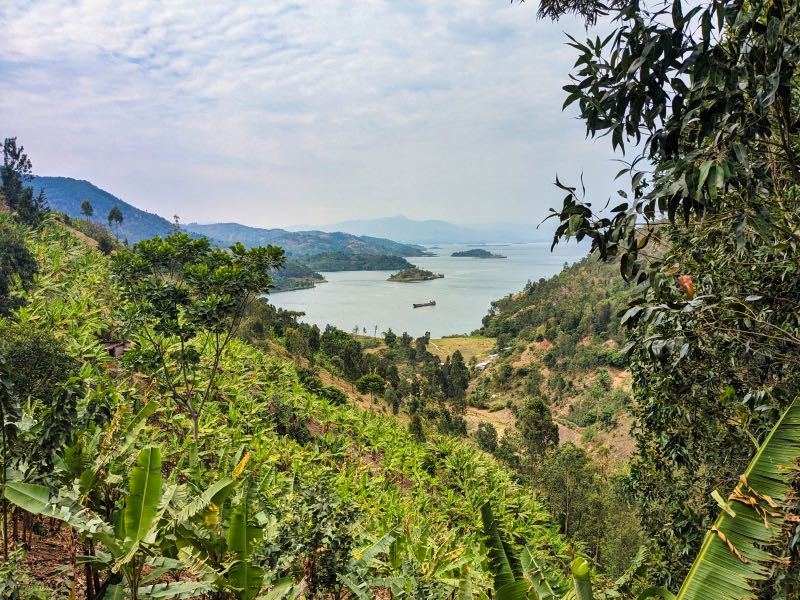
Congo Nile Trail Stage 1: Gisenyi to Cyrimbi
- Distance: 16.5 km
- Elevation: +540 / -550m
- Time: 4-5 hours
- Difficulty: Easy to moderate
The Congo Nile Trail starts just past the Bralirwa Brewery, about 8 km outside of Gisenye. To get there, grab a moto-taxi and ask to be dropped off at the brewery. From the centre of town, it should cost 1000 RWF.
First, walk through the brewery on the highway. Just past the brewery on the left-hand side, you’ll see the sign for stage 1.
Walk a further 150m, and you’ll see the sign for the hiking trail, which goes straight uphill. The ascent begins!
Stage 1 is quite varied and mostly on footpaths, with 2 hills to conquer. The trail traverses coffee plantations and at times really hugs the lake (especially the last few km). It also has some of the most “village walking” in the entire northern section.
At Cymbiri, there is only one place to stay: Cymbiri Base Camp / Guesthouse (both names seem to be used). It’s a really fantastic spot and was our favourite on the entire Congo Nile Trail. There is a nice sandy beach set amongst a beautiful garden.
For campers, you can pitch a tent on the grass right in front of the water. They asked for 10,000 RWF per person per night (pppn), but there is space to negotiate.
Rooms cost between 30,000 and 450,000 RWF. There are toilets, but no showers.
Dinner costs 5000 RWF and is very good value. Dinner is buffet style with an assortment of chips, rice, beans, veggies and meat (if you want it). Breakfast costs 2000 RWF.
You can also buy coffee from the farm. This costs 10,000 RWF per kilo or 5000 RWF for a half kilo. They will even grind it for you!
Congo Nile Trail Stage 2: Cyrimbi to Kinunu
- Distance: 13.7 km
- Elevation: +380 / -360m
- Time: 3-4 hours
- Difficulty: Easy to moderate
Stage 2 of the Congo Nile Trails starts off by hugging the lake for a couple of km and visiting some bays before connecting to the main trail again. This part used to be called ‘the shortcut’ but is now just part of the hiking trail.
Overall, there is less village walking than on stage 1, so you can have a little bit more seclusion.
The last third is quite undulating with lots of ups and downs. In particular, the last descent is very steep and very slippery. It’s short – only around 20m, but the gradient is like 90 degrees. Be careful!
There are 2 places to stay in Kinunu.
The first, and only budget option, is Kinunu Guesthouse. Camping costs 20,000 RWF for a single, including breakfast and 25,000 RWF for a couple with breakfast. They’re not really open to negotiating without breakfast. Rooms range from 45,000 – 60,000 RWF. There’s a restaurant with a full menu. Mains range from around 7000 – 10,000 RWF. You can also get cold drinks and can buy bags of coffee. There are toilets and showers available.
The second option is Rushel Kivu Lodge. This is a very fancy and upmarket hotel. If you would like to camp, it costs $50 USD with your own tent, including breakfast. Somehow we negotiated this down to 20,000 RWF. You do get a very refreshing welcome drink though! There is a very beautiful beachfront and the staff are very friendly. The restaurant is reasonably priced for an upmarket option (i.e., pizza around 9000 RWF). There are toilets and showers.

Congo Nile Trail Stage 3: Kinunu to Bumba
- Distance: 24.5 km
- Elevation: +1240 / -720m
- Time: 6-8 hours
- Difficulty: Difficult
Today you will learn why Rwanda is called the land of a thousand hills! It’s a monster day and very challenging. Not only is it pretty long, but there is lots of elevation to be gained!
Immediately you encounter your first hill. You’ll gain almost 200m over the first 2km.
At around the 12 km marker is the turn-off for Musasa Homestay. People really seem to like it there and it’s a good way to break up the stage. Considering the challenge of stage 3, it’s not a bad idea at all, especially if it’s hot (this way you’ll avoid climbing the final hill in the heat of the day).
After the turn-off for Musasa, the trail is a bit confusing and not as clearly marked. Pay attention around this part.

There are two more big hills in the middle of the section. The second of these is pretty big and goes up to almost 1800m – just to go back down to lake level again!
There is also a river crossing. The river looked swift but was only knee-high at the deepest. We were there in the driest month though, at the end of the rainy season, so if it’s been raining or it’s the start of dry / end of wet, seek local advice.
Finally, there is one last, brutal, big hill. It goes on forever and finally, you reach Bumba at almost 2000m.
Overall, we didn’t love Bumba. It didn’t have the best vibe and felt a bit rough around the edges. The base camp, however, is in a lovely location overlooking the lake.
The base camp is Bumba Guesthouse. It’s very difficult to find, so when you approach town, contact the owner, Ernest for directions. His WhatsApp is +250 783 171 757.
Camping costs 15,000 RWF per tent and rooms are around 45,000 RWF. The meals are the most expensive on the trail: 10,000 RWF for dinner and 5,000 RWF for breakfast. However, they are meant to be quite delicious and the profits go to a school that Ernest supports.
Ernest is very lovely and helpful and the views from the guesthouse are amazing. It is quite high (almost 2000m), so bring something warm for the evening if you are camping.
Congo Nile Trail Stage 4: Bumba to Kibuye
- Distance: 15 km
- Elevation: +450 / -800m
- Time: 3-4 hours
- Difficulty: Moderate
Stage 4 begins by losing all the elevation you gained the previous day. You just head straight down. Fortunately, it’s not too bad really and not that steep.
Over the day you’ll encounter two river crossings. The first one is easy and very shallow. The second one was about knee-high. The same advice from above applies.
There are two hills to cross today. Descending one of them (just before the second river crossing) is very, very steep. We almost fell a few times.
Honestly, much of today felt tedious and was our least favourite day. It was less scenic, there were a lot of requests for money and few chances to get drinking water.
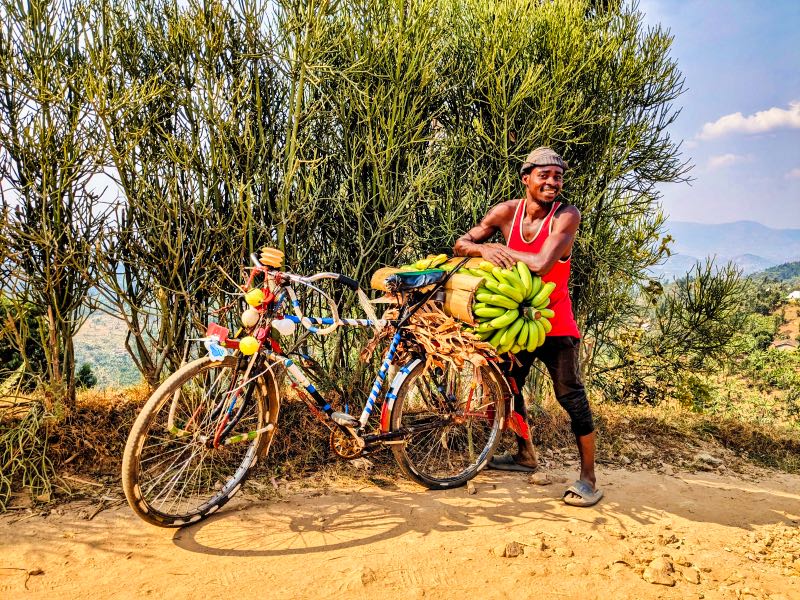
There are two ways to finish the trail.
One is to continue along the designated hiking trail to the lake, where you need to arrange a boat to take you to Kibuye. This needs to be arranged in advance and it would be very sad if you got there and there were no boats (which is likely). Ernest at Bumba Base Camp can help you arrange this. The boat is not cheap and will cost around 30,000 RWF. *This option is around 13 km of walking.
The second option is to turn off onto the main Congo Nile Trail (the biking one) and walk down to the highway. From there, you can flag a moto-taxi or a bus. We were able to flag two moto-taxis very quickly. To get anywhere in Kibuye (including on the peninsula) will cost no more than 2000 RWF, although this will be cheaper if you’re just going to town. *This option is around 15 km.
Where to stay in Kibuye
Livalana Hotel
If you’re after a budget camping option, this is your best option. It’s an overlanders favourite. You can camp on the grass near the water for 20,000 RWF per car (or tent) and they give you access to a shower and toilet. There’s also a restaurant on site.
It’s a great place to relax after the hike, but just remember, this is Africa, so if it’s a weekend, there’ll probably be loud music.
This was also the only place in Kibuye that let us leave our car whilst we embarked on the Congo Nile Trail.
Home St Jean
What We Would Have Done Differently
When we hiked the Congo Nile Trail in August, there was very little current information on the hike, so it kind of felt like going in blind.
Here are a few things we would have done differently:
- Carried less food. We carried enough food to cover all of our meals. We ended up buying dinner on the first night and really enjoyed it. As we later found out, almost all the guesthouses are social enterprises, with the profits going back into the community. So by buying a meal, you’re further helping the community out. If we were to hike it again, we probably buy dinner every night and avoid carrying the extra weight.
- Bring hiking poles. We were expecting mainly road walking, so we didn’t bring our hiking poles. As the hills can be so steep, we really missed having them for the challenging descents.
- Bring extra water capacity. We didn’t bring our water bladders as we thought that water would be more readily available. It was super hot when we hiked the Congo Nile Trail and we went through water quickly. Next time, we will bring our water bladders so we can carry at least 2L per person.
Congo Nile Trail: Tips and Tricks
- Learn hello in Kinyarwanda (‘muraho’). It’s a nice way to greet people, especially the older ones who don’t speak English. You’ll get ‘yego’ back – which means yes but is also a way to respond to someone who says hello.
- Download maps.me or another digital map in advance.
- Bring cash. Most of the base camps operate on a cash-only basis, so make sure you have enough for the entire hike.
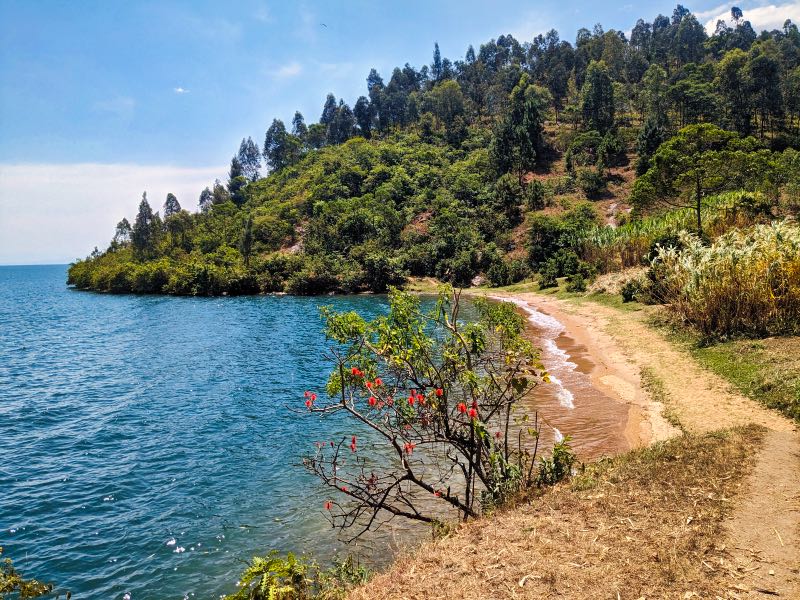
Congo Nile Trail Packing List
Our biggest piece of advice here is to pack as lightly as possible! This is one hike where you really don’t need to bring much.
Essential items include:
- Mosquito repellent (this is a malaria zone after all)
- Sunscreen
- Hat
- Swimsuit
- Travel Towel
- Minimum 2L water capacity
- If camping, a lightweight summer sleeping bag
Here’s our complete packing list for the Congo Nile Trail.
Gear
- Good quality hiking backpack (men’s and women’s)
- Tent
- Sleeping pad
- Blow up pillow
- Sleeping bag, or depending on how warm/cold you run, just a liner
- Waterproof compression bag (for the sleeping bag)
- Stuff sack (for keeping clothes in while hiking)
- Headlamp
- Ground blanket
- Trekking poles
Women’s Clothing
- Hiking boots
- Hiking pants
- Hiking tank top
- Long sleeve hiking shirt
- Merino underwear
- Sports bra
- Lightweight merino socks (I’m a fan of wearing two pairs when hiking)
- Bamboo leggings (for the evening)
- Long sleeve top (for the evening)
- Waterproof sandals
- Sunglasses
- Hat
- Buff
- Swimming suit
Men’s Clothing
- Hiking boots
- Hiking pants/shorts
- Sports t-shirt
- Merino underwear
- Lightweight merino socks (also a fan of the double socks)
- Long sleeve top (for the evening)
- Waterproof sandals
- Sunglasses
- Buff
- Hat (full brimmed)
- Swimming suit
Cooking
- Camp stove
- Cooking set (pot, bowls and mugs)
- 1 x 230 grams fuel canister
- Collapsible tea kettle (a luxury, but it’s worth it!)
- MSR MugMate Coffee Filter
- Spork
- Pocket knife
- Lighter and matches (in a waterproof bag)
- Water bladder
- Water bottle
Sanitation
- Steripen Ultra Rechargeable Portable UV
- Hand sanitizer
- Toilet paper
- Hydralites / Electrolytes (if you can’t find, salt and powdered juice packets work a treat)
- Biodegradable dish soap
- Mini sponge (just cut a regular one)
- Rubbish bags
Personal
- Microfiber towel
- Eye mask
- Ear plugs
- Toothbrush
- Biodegradable toothpaste
- Deodorant paste (decanted into a small container)
- Blister first aid kit
- First aid kit
- Sunscreen
- Bug repellant
- Book / kindle
- Games to play at camp – deck of cards, or our favourite, Yahtzee
Disclaimer: This post contains affiliate links. This means that if you buy or book anything through them, we’ll earn a small commission at no extra cost to you. This helps us run this website and create comprehensive guides to help you get off the beaten track. We only recommend products and/or services that we use ourselves and trust.

